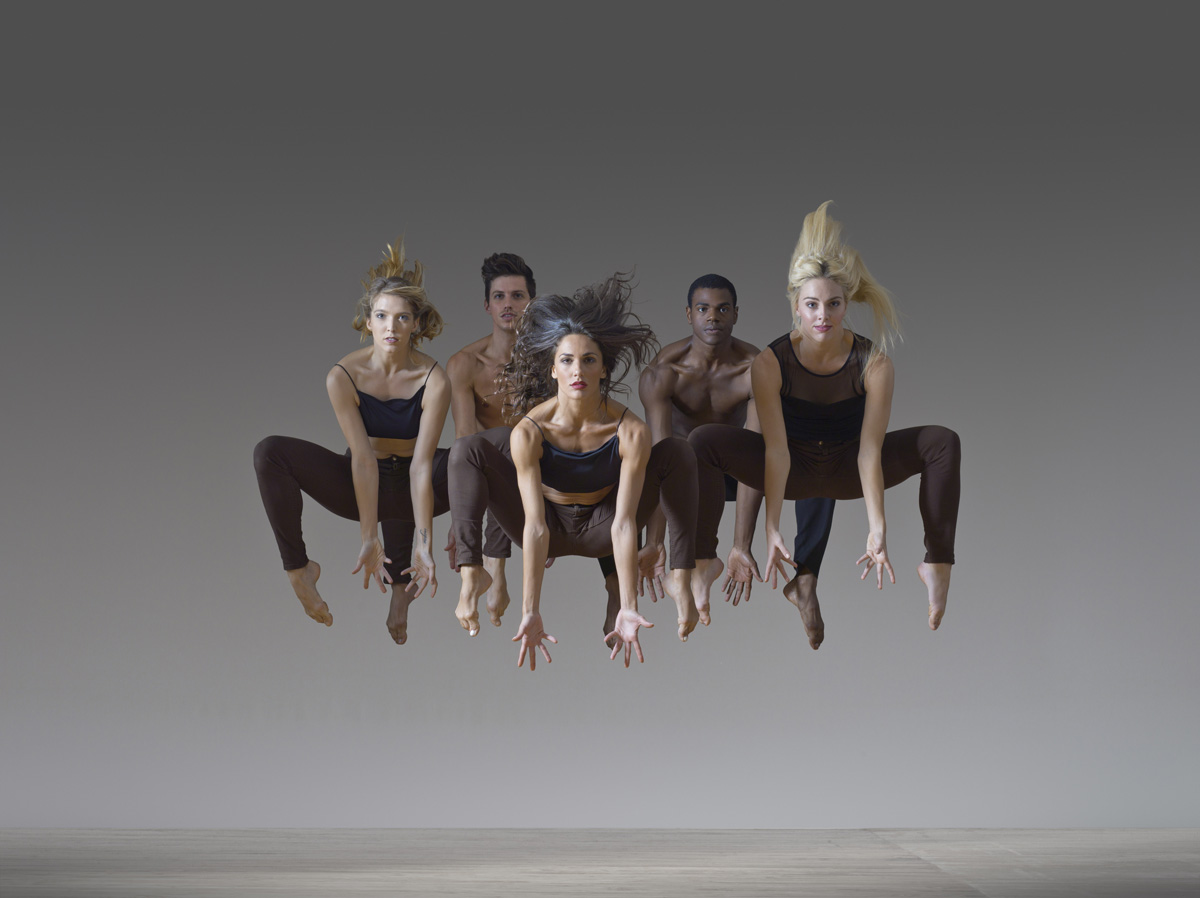The year 1984 was the year an Apple computer commercial introducing the first Macintosh to the world rocked the nation when it aired during the Superbowl. Two years before, David Parsons rocked the world of dance when in 1982 he made a dancer fly.
Caught opens with electronica (by Robert Fripp) that begins tentatively in the dark. A spotlight (co-founder and resident lighting designer Howell Binkley has won a Tony Award for his work on Hamilton and other Broadway shows) casts a circle into which a solo dancer moves. The spotlight moves. The dancer enters it, only to be swallowed again in darkness, then re-emerge. The effect gathers momentum, until the dancer is caught in the flash of a strobe light. Blink, and the dancer is flying. Again and again, the audience sees the body in a series of snapshots, leaping, walking in air, never touching the ground, frozen at times in a motion that continues in a circle or line that takes the entire stage as its arc. Periodically, the dancer lands, once again in the spotlight, hands behind back, chest heaving. How the dancer covers ground, but remains in place, is a mind-blowing trick. Like MOMIX, which had just entered the scene with its breathtakingly disorienting visual wonders, Caught suggested that dance could be magic. A visual magic married to unbelievable athleticism.
I saw Parsons Dance Company over the weekend in a program that included the seminal piece from 1982. When Fripp’s music pulsed in the opening darkness, I felt chills. I sat back. I had seen the piece when TITAS featured Parsons in 2014, and I was mesmerized and exhilarated as I was then. This time, the dancer was Zoey Anderson, who has the tremendous power required to execute the piece’s leaps. In the darkness that followed, I thought the audience would never stop clapping. They were electrified, as I had been when I first saw it. It is one of those works that stays with you the rest of your life.
This is why Parsons has been one of the leading figures in American contemporary dance.
But that isn’t all. The opening piece, Wolfgang, set to music by Mozart, plays impishly and exuberantly with the idea of what it owes to ballet itself. From the first flash of burgundy leotard under the long, Romantic-style tutus to the exit in the second part, when a female dancer is dragged offstage on her stomach, preening, chin delicately set on cupped hands—the way a ballerina in a child’s music box might watch morning television in leg-warmers—you know the aim is deliciously cheeky and tongue-in-cheek. But like most of the company’s work, the technique is flawless.
Similarly, a piece like Whirlaway underscores the fact that the company has a sense of timing that’s almost unmatched. Commissioned by the New Orleans Ballet Association, it’s a rollicking, three-part work set to music by New Orleans-born Allen Toussaint. Oh, the elbows akimbo; oh, the flicked wrists. Like the work of Twyla Tharp, Whirlaway is flirty and exuberant; it revels in the energy and dynamism of the body; it’s above all breathtakingly sharp, wickedly fast. The solo, danced by Anderson, was captivating, involving a forceful taking of the stage. The music was toe-tapping, and while the steps remain athletic and hyper-demanding, the dancers seem to move because they just can’t help themselves, and because it just feels good.
Reflections, a solo work from this year, presented a Sphinxian riddle of movements that appear to be part of a personal reverie. This is not necessarily the most penetrable of Parsons’ pieces, but still, the music that swells is Claire de Lune by Debussy. Its watercolor bleeding carries you. You’re held for the duration, captivated by what remains enigmatic.
It’s a turnover year for Parsons Dance. The weekend’s performance was the last show not only for several company members, two of which have been with the ensemble longest, but also for rehearsal director Abby Silva Gavezzoli, whose solo in Reflections takes on a deeper poignancy in that light.
The final work, Ma Maison, continued the New Orleans theme. Decked out like Mardi Gras masqueraders, the company moves in a stunning prism of syncopations—of shimmies and jerks and Charleston-meets-ballet whirlwind reversals—while their faces are obscured by skeleton masks. Commissioned for Trey McIntyre Project, to the music of Preservation Hall Jazz Band, it was a 30-minute piece with breathtaking presence. It proved what Parsons does without fail: that skeletons can jive, and that those who move can’t help themselves.





